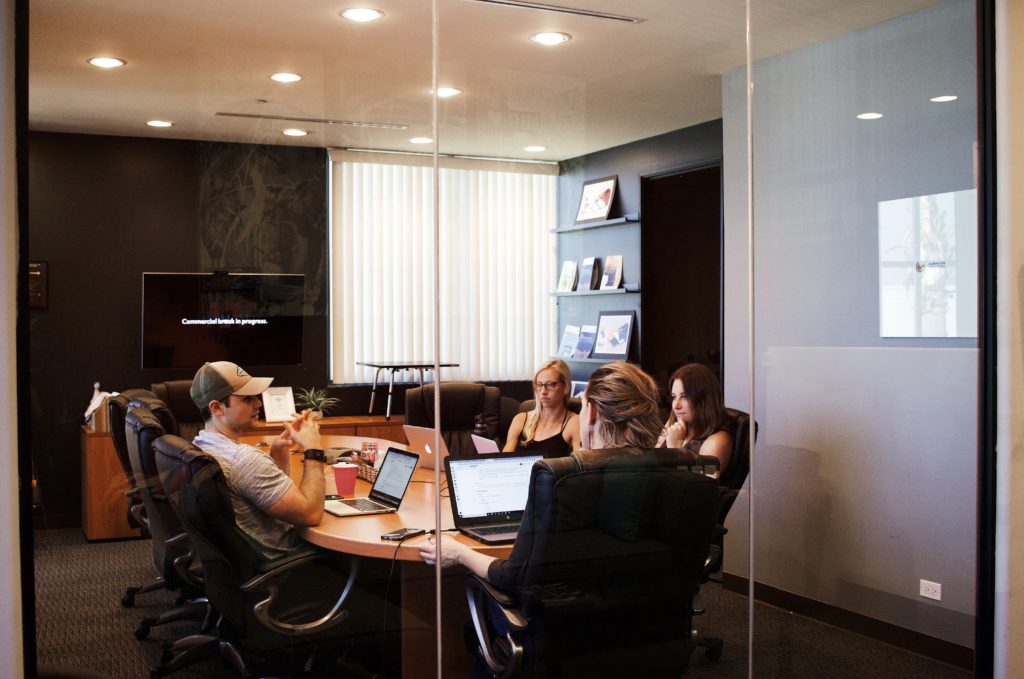How to Make Your Meetings More Engaging

Everyone knows meetings can be draining. The A.wordsmith team has a lot of meetings (client, internal, etc.) and we’ve learned a few tricks for keeping everyone engaged along the way. Here are some simple things to incorporate into meetings for maximum productivity.
Set an agenda and stick to it
Agendas are a great way to keep your meeting on track and ensure you don’t forget to talk about something important. Our team generally follows the same agenda formatting:
- • Previous month’s successes
- • Next month’s priorities
- • Action Items
This formatting ensures that our meetings are productive and if conversations veer off track – we have something to get us going in the right direction again. Agendas save time and keep your team engaged. They give everyone a general idea of how long the meeting will run, so your team can adequately prepare for the discussion and how much time they have to complete other tasks before and after.
The CEO of QualCare Alliance Network summed it up best in a New York Times article, “Give me an agenda or else I’m not going to sit there, because if I don’t know why we’re meeting, and you don’t know why we’re there, then there’s no reason for a meeting.”
Start with an icebreaker, jokes or a riddle
No one really looks forward to internal meetings. By starting off in a fun way, the whole team gets engaged and ready to tackle whatever topic lies ahead. Here are some ideas we hope to try soon:
- • Give a tough riddle and see who can crack it first – maybe even offer a prize for the winner!
- • Go around the table and make everyone tell their best (or worst) joke.
- • Hand everyone the description of a fake product and five minutes to prepare, then have them try and sell it to you.
Use your best judgement. There’s a time and place for everything! Jokes and humor are not always the right course of action – but when used in the correct setting, they can bring people together.
Change it up
It’s hard not enter a meeting with a ‘meeting mentality’, especially if you’re always gathering in the same designated area. Shake things up by having your meeting in a nearby coffee shop, over lunch or at the park. Our team has started “walking meetings,” where 2-3 people talk about a project/challenge while walking around a few blocks – this gets the blood pumping and creative juices flowing!

Banish electronics
Do you really need your laptop? Typing notes is fine, but studies show taking notes by hand improves memory. Plus, 60 percent of meeting attendees take notes to appear as if they’re listening – so unless notes are necessary, consider scrapping it all together.

Laptops and phones are breeding grounds for distractions – Slack messages, Facebook, emails, etc. No one can read incoming notifications while simultaneously giving their full attention – it’s impossible. MIT neurologist Earl Miller explains the misconception about multitasking, “When people think they’re multitasking, they’re actually just switching from one task to another very rapidly. And every time they do, there’s a cognitive cost in doing so.”
The team might feel naked without technology, but the result will be better conversations, higher engagement and an overall increase in productivity.
Keep everyone involved
Unless the individual leading the meeting is a world-class speaker, it can be difficult to pay attention to one or two people talking for an hour. Keep your team on their toes by requiring everyone to pitch in to the discussion. This will ensure more ideas are brought to the table and no one will zone out. If you’re struggling to find ways for everyone to be involved, there’s probably too many people in the meeting.
Send a follow-up
If you’re implementing some of the things mentioned above, you’re hopefully already seeing more engaged meetings – but sending a follow-up with specific action items never hurts. A reminder of what items were discussed ensures that no one’s time was wasted. After all, what’s the point of meeting to discuss tasks if they don’t get done?
Keep these tips in mind when planning your next meeting. Consider your goals and what practices will help you best accomplish them. Most of all, don’t take yourself too seriously! Meetings should be engaging and actionable. Everyone should leave feeling their time was well spent.